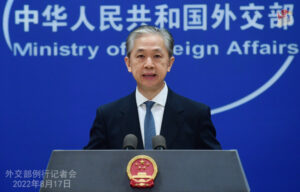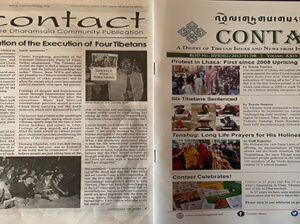Instances of forced labour have occurred in Tibet that are similar to those found in East Turkestan [Ch:Xinjiang], the Uighur Muslim ethnic minority region in northwest China, according to a report by the United Nations’ top expert on slavery. The UN Special Rapporteur on Contemporary Forms of Slavery, Tomoya Obokata has noted in his latest report that in the Tibet Autonomous Region, an extensive labour transfer programme has shifted many people who were mainly farmers, herders and those involved in other rural work into low-skilled and low-paid employment.
According to the report Contemporary Forms of Slavery Affecting Persons Belonging to Ethnic, Religious, and Linguistic Minority Communities, there are two distinct state-mandated systems that exist in Tibet and Xinjiang leading to forced labour. They are:
- the vocational skills education and training centre system, which confines minorities and subjects them to work placements; and
- the alleviation of poverty through a labour transfer system in which surplus rural labourers are transferred to secondary or tertiary sector work.
The report further highlights that while the Government of China claims that these programmes create employment opportunities for minorities and enhance their incomes, there are indicators of forced labour pointing to the involuntary nature of work rendered by affected communities present in many cases.
The Special Rapporteur has called for additional independent investigation on slavery and forced labour in Tibet and Xinjiang. He concluded that “given the nature and extent of powers exercised over affected workers during forced labour, including excessive surveillance, abusive living and working conditions, restriction of movement through internment, threats, physical and/or sexual violence and other inhuman or degrading treatment, some instances may amount to enslavement as a crime against humanity”.
According to the Central Tibetan Administration (CTA), Representative Thinlay Chukki from the Tibet Bureau Geneva has welcomed the report. She said, “This report comes in the backdrop of China’s denial of existence of forced labour system in Tibet and Xinjiang as well as reports of China exerting pressures on the Office of the High Commissioner for Human Rights to not publish its long-due report on East Turkestan. The UN Special Rapporteur not only debunks China’s ‘development, employment and income’ rhetoric but also clearly categorises the extensive labour transfer programme of Tibetan farmers, herders and other rural workers as forced labour. We therefore join the call of the Special Rapporteur for an independent analysis on the existence of enslavement as a crime against humanity in Tibet.”

Chinese Foreign Ministry spokesman Wang Wenbin
In a statement released by the Ministry of Foreign Affairs of the People’s Republic of China, Chinese Foreign Ministry spokesperson Wang Wenbin has condemned the finding of the report by the UN Special Rapporteur on Contemporary Forms of Slavery. He said that the UN Special Rapporteur has “chosen to abuse his authority, blatantly violate the code of conduct of the special procedure, malignly smear and denigrate China and serve as a political tool for anti-China forces.”
Wang Wenbin further asserted that “there has never been “forced labour” in Xinjiang. The Chinese government follows a people-centered development philosophy and attaches great importance to protecting the rights and interests of workers. We protect the equal right of workers from all ethnic groups to seek employment, to participate in economic and social life, and to share the dividends of socioeconomic progress. Some forces manipulate Xinjiang-related issues and fabricated the disinformation on “forced labour” in Xinjiang. In essence, they are using human rights as a pretext to undermine Xinjiang’s prosperity and stability and contain China’s development and revitalisation. Their scheme will never succeed.”
The UN Special Rapporteur on Contemporary Forms of Slavery explored the realities of people belonging to minority groups with regard to slavery, its causes and consequences, to commemorate the thirty-first anniversary of the Declaration on Rights of Persons Belonging to National or Ethnic, Religious and Linguistic Minorities. He identified chattel slavery, forced and bonded labour, child and/or forced marriage, domestic servitude, sexual slavery, and child labour as the main manifestations of contemporary forms of slavery. He will present his report at the upcoming 51st session of the Human Rights Council, which will take place from September 12 to October 7, 2022.




 Print
Print Email
Email